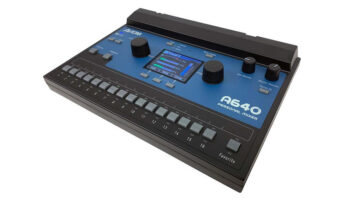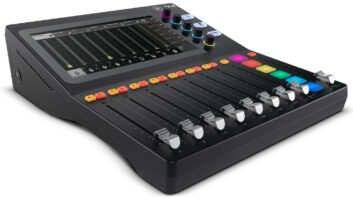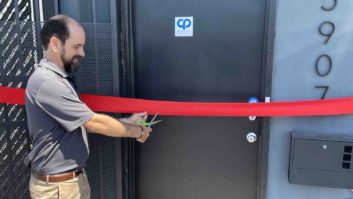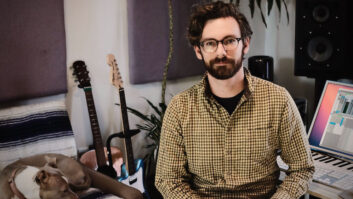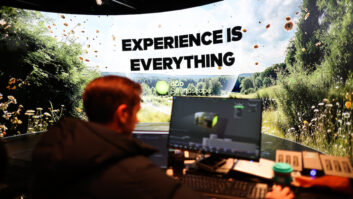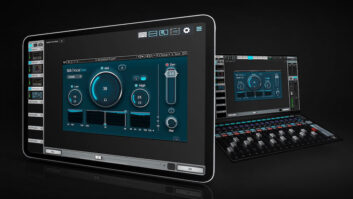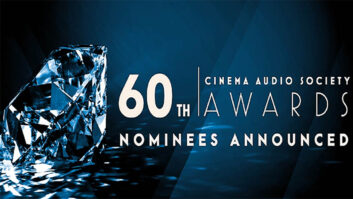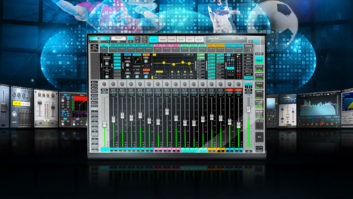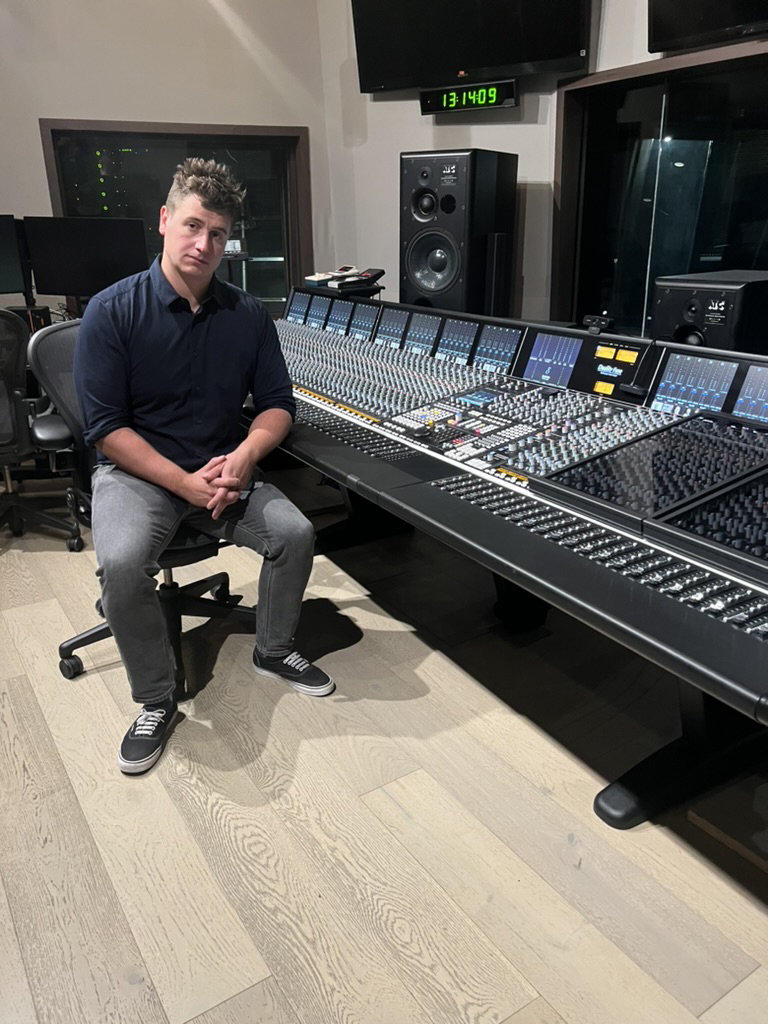
Los Angeles, CA (April 24, 2024)—Laurence Anslow came up in the business the old-fashioned way, which is to say, through hard work, long hours and perseverance. After graduating from the University of Surrey’s prestigious Tonmeister program, he spent a decade working his way through the ranks at AIR Studios in London, frequently on scoring sessions.
It was on one of those sessions, for 2020’s Jingle Jangle: A Christmas Story, that he met Harvey Mason, Jr., the film’s executive music producer. They hit it off, and before he knew it, Anslow was jetting off to Los Angeles, mid-pandemic, to help Mason prepare his Evergreen Studios to handle large orchestral and big-band recordings when it opened for business, scheduled for late 2021.
Evergreen is now Anslow’s home base, but he has the freedom to work with his own film and TV composer clients at other Hollywood scoring stages. His most high-powered project since relocating, he says, was recording the score for Ghostbusters: Frozen Empire with composer Dario Marianelli, who usually works with AIR’s Nick Wollage.
“I never thought I’d get to record with Dario; he’s a legend,” Anslow says. “Nick was kind of a mentor to me. I recorded the score at the legendary Streisand Scoring Stage on the Sony lot, then sent it back to Nick to mix it, so that was a lovely collaboration.”
His biggest ensemble to date was with composer Lorne Balfe on Black Adam, also at the Sony scoring stage, with 107 musicians. Recent projects with Mason at Evergreen have included songs for the French animated musical Miraculous: Ladybug & Cat Noir, The Movie. Last year, Anslow recorded and mixed Marcus Miller’s score for Candy Cane Lane at Sony and the Village, which he says was one of those happy accidents you sometimes run across: “As a bassist, Marcus was one of my heroes when I was growing up.”
ROOTS IN LONDON
Back in England, Anslow worked on sessions with some of the biggest names in film music, though not as the mixer, he hastens to add. “I’ve not done any recording directly for Hans Zimmer, but I was the Pro Tools recordist on a lot of his scores, like Dunkirk and Boss Baby. No Time to Die was the last thing I did with him. On one of my first sessions, when I was 24 years old, they moved me to the Pro Tools chair on Interstellar. I was doing the percussion overdubs in AIR’s Studio 1—and Hans Zimmer, [director] Christopher Nolan and [scoring mixer] Alan Meyerson walked in. It was really high pressure, but I got through it.”
Anslow joined AIR Studios in 2011 after four years in Surrey’s Tonmeister program. “I should talk about that course more often. We take it for granted in the U.K., but it really is extremely high-powered,” he says, noting that the course accepts only 25 students each year and places an emphasis on mathematics and physics as much as music. “For the first year, I was only allowed to assist in the studio. The first week was an introduction to the decibel and all the mathematics behind it. It gives you that foundation; I think it’s the best in the world.”
Interestingly, of his entire class, there are only three or so people still actively recording. Everyone else is still in the industry, working with equipment manufacturers and broadcast organizations: “Just not messing around in studios!” he chuckles.
LONDON TO LOS ANGELES
Working on both sides of the Atlantic Ocean has given Anslow some perspective on the differences between U.S. and U.K. scoring sessions. That’s not to suggest the audio gear or production techniques are that different; far from it. But behind the scenes, he says, there are observable differences where staffing and workflows are concerned.
“In the U.K., it’s still very much an old-school, teaboy progression,” he says, using the traditional British job title for someone just starting out at a studio. “[At AIR], I started out as a runner for two or three years, then I started assisting on sessions, then I was a Pro Tools recordist. After about 10 years, one of the engineers turned around and said, ‘You’re going to record this, and I’m going to go upstairs and mix it.’ So after 10 years, I got thrown in the chair. I’d done every job. I’d done board setups; I had to learn Pro Tools on huge, high-pressure sessions—but it was all a stepping-stone to get to that mix position.”
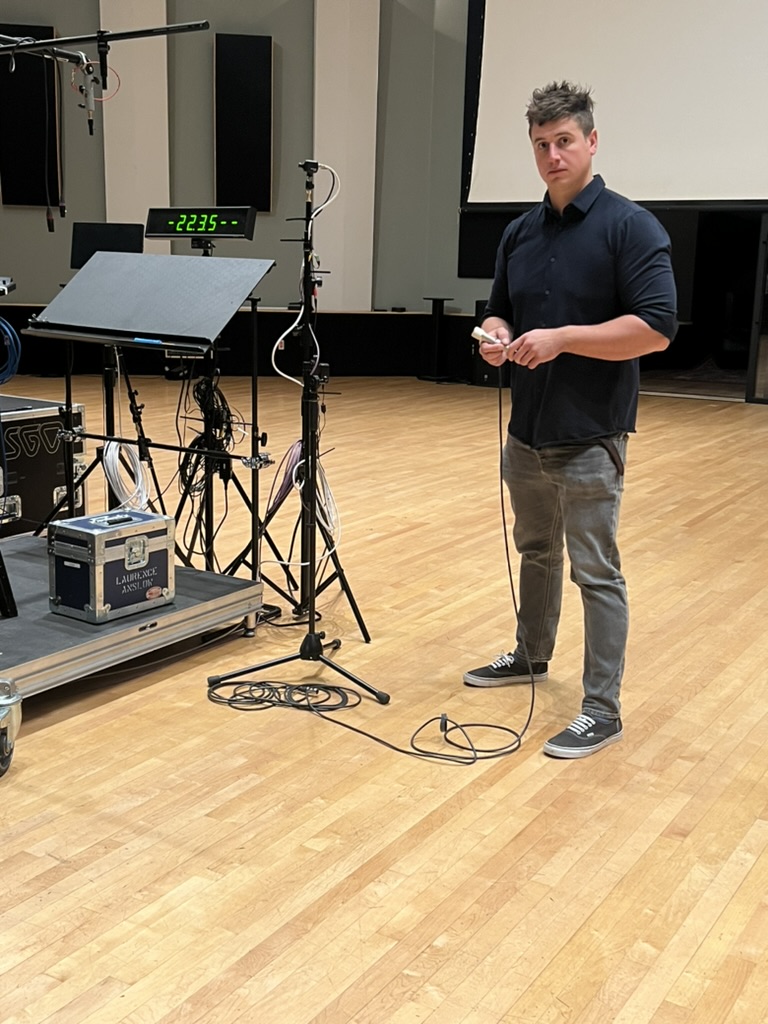
Working on the big Hollywood scoring stages at Fox, Sony and Warner Bros. after relocating, he soon noticed that things were a little different. Rather than advancing from one role to the next, individuals typically stayed in one job for years, developing tremendous expertise as a result. “In the States, everybody seems to have their role on the stage,” he says. “Nobody’s chomping at the bit to get in the mix position, but they’re just as important as the engineer—and that’s the nice part about it.
“For example, when I first did a session at Warner Bros., the two guys assisting me were in their 50s and 60s,” he notes, “and here I was, this 32-year-old, fresh off the boat. It felt strange because in the U.K., you’re used to having 22-year-olds and 27-year-olds under your command.” In contrast, recording studios in the U.S. typically offer an upward career path from starting as a runner, but on the film scoring stage, he says, every engineer on the stage is a seasoned IATSE veteran with a dedicated role.
BEST OF BOTH WORLDS
When he first started in the U.K., Anslow recalls, “I was working under Chris Barrett [AIR’s senior recordist]. There would be just the two of us on a session. We would set up the floor, then Chris would disappear off to the control room and I’d finish up the floor. We’d scratch all of the mics and he’d build the Pro Tools sessions while I rigged the headphones. [In Hollywood] in the control room, your recordist will take care of the console, your preamps, the patching, and the Pro Tools operator is in a separate department.”
There are also differences in the workflows on the scoring stage, he discovered. “In the U.K., the engineer does all the headphones; in the U.S., there’s a separate monitor mixer. I really like the U.S. way because it takes that responsibility away from the engineer, so you can concentrate—and it stops you from having to use that awful cue section on most consoles,” he laughs.
Mixing monitors from the recording console necessitates using panpots, which can be far from precise, he explains. Using a dedicated monitor console, “You can do it on faders. It’s way easier to balance, far more responsive, plus you can concentrate on riding the click. It also opens communications between the musicians and the engineer on the floor. It’s easier for the musicians to just wave at the monitor engineer” to get levels adjusted.
The Incomparable Harvey Mason, Jr. – Mix Cover Story, Part 1
“The other thing about the U.S. is that you’ll see stage crew working at their home stage, but they also take work at other union stages in town. In the U.K., the mixer tends to be freelance, but everybody else tends to be employed by the studio, including the Pro Tools operator,” with a couple of exceptions, he says. “Here, there will be a set of Pro Tools operators or a set of monitor engineers that work on all the stages, so it’s more like a freelance group.”
There are pros and cons to the staffing methods on both sides of the Pond, Anslow says. “In the U.K., the training and mentoring approach forces you to do every job in the studio and on both sides of the glass. In the U.S., there isn’t as rigid a training and mentoring approach, so engineers tend to be more specialized and less general. I’ve been fortunate to experience both.”
